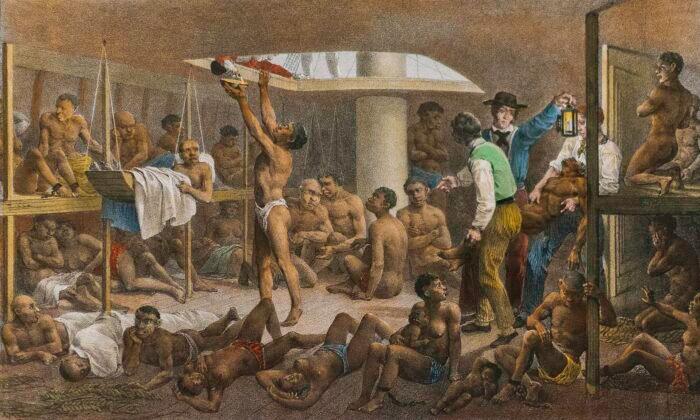Jared Ross Hardesty’s new book “Mutiny on the Rising Sun: A Tragic Tale of Slavery, Smuggling, and Chocolate” has plenty of thematic elements to make it an exhilarating story. Unfortunately, the book doesn’t live up to its themes.
I am always up for stories of adventure, even mutiny, on the high seas. When I received this book from New York University Press, I couldn’t wait to start reading it. The author lays out the story’s premise and how it revolved around smuggling chocolate or, more specifically, cacao. Cacao beans come from the cacao tree which, as the author points out, is indigenous to the Americas.
At the beginning of the book, the author discusses how the supply and demand issues in the 18th century elevated cacao to a luxury item. The demand was high for cacao, especially among the wealthy, Europeans in particular, but also the American colonists. Due to its rarity, supply was limited.
To make matters worse, there were trade restrictions placed on cacao by the colonial powers of Britain, France, Spain, Portugal, and the Netherlands. It was the perfect recipe for smuggling, which the author states became “central to the economy of Britain’s North American colonies.”

The Mutiny and the Captain
Hardesty begins the story with the brutal murders of several crew members of the Rising Sun. We aren’t told why the murders, and therefore the mutiny, take place at the beginning. The explanation comes toward the end of the book. The author breaks the relatively short story into six chapters that discuss either the people on the ship or its cargo (that is, the cacao or the African slaves).The bloody introduction, which is a few pages long, draws the reader in. The author then details one of the main players, Capt. Newark Jackson, and how the story also centers around him, or at least his profession.
Too Much Speculation
The book begins as an easily digestible read, but then starts to get in its own way. For such a short read (six chapters covering 162 pages), it is often full of speculation and uncertainty.The author acknowledges this issue by admitting that the information about the characters in the book are limited. But this doesn’t keep the author from engineering their motivations, specifically those based on class and race.
Along with this, Hardesty jumps around in his chapters from topic to topic, and many times topics that are not essential to the story. The book ranges from good historical research to speculation to sermonizing.

The author states that the “records reveal a world very different from our own” and that some things were acceptable or unacceptable socially that we today would view in reverse order. The author then flips this understanding by stating that “eighteenth century America was an incredibly violent place where force structured everyday life.” The hyperbole and lack of historical context undermines his previous statements.
Hyperbole and speculation too often find their way into the pages of the book, even when the author acknowledges that there is no way of knowing specific things. Not only do some of his statements, like the aforementioned, lack historical context, some of them seem to be a blatant misrepresentation.
When he discusses the trial of the two mutineers (the third committed suicide while being hunted in the woods, an interesting segment of the story that proves short-lived) and the harsh death penalty they endured, Hardesty tries to pin the reason for that harshness on race and class.
A Good Story Lost
The idea of the story is intriguing, and it is no wonder the author pursued it: murder, mutiny, the high seas, smuggling, very young African slaves in the ship’s hold, and survivors that outsmart their captors (mutineers).The story of this ill-fated voyage on the “Rising Sun” had so much to offer, and perhaps that is where the author faltered. He didn’t seem to know which one or two or even three storylines to follow or weave together. Perhaps it was a case of too much information as his appendixes and notes in the back of the book account for 82 pages.
All of these deep issues found in the book―the necessity to smuggle cacao, the differing lives brought together on a single ship, the distressed slaves on a voyage to an unknown destination, and a voyage gone violently wrong―are lightly addressed, some more than others. Rather than sticking to the themes, too often the author repeats himself or reiterates the social ills of the time as if he feels required to distance himself from them.
Hardesty does ask early on for the reader’s pardon due to the lack of data surrounding specific parts of the book. Not having enough historical data is forgivable, if indeed it is not there. Stuffing the pages with unnecessary sentences and paragraphs that pull away from the story is not.
I wish the author would have chosen a theme and gone with it. “Mutiny on the Rising Sun” would have made a work of great historical fiction, which would have opened up an avenue for the author to write freely, because it doesn’t seem like he does.
Approaching the work as fiction would have enabled him to acceptably fill in those spots, those unknowables, with surrounding detail, his speculations, and even social sermonizing. Another option would have been an insightful long essay.
Undoubtedly, the book itself could easily have been cut in half, if not more, allowing for a more concise story. Perhaps the problem isn’t completely due to the author, but to the editors of the work. In any case, “Mutiny on the Rising Sun” is a story worth knowing, just not a book worth reading.







